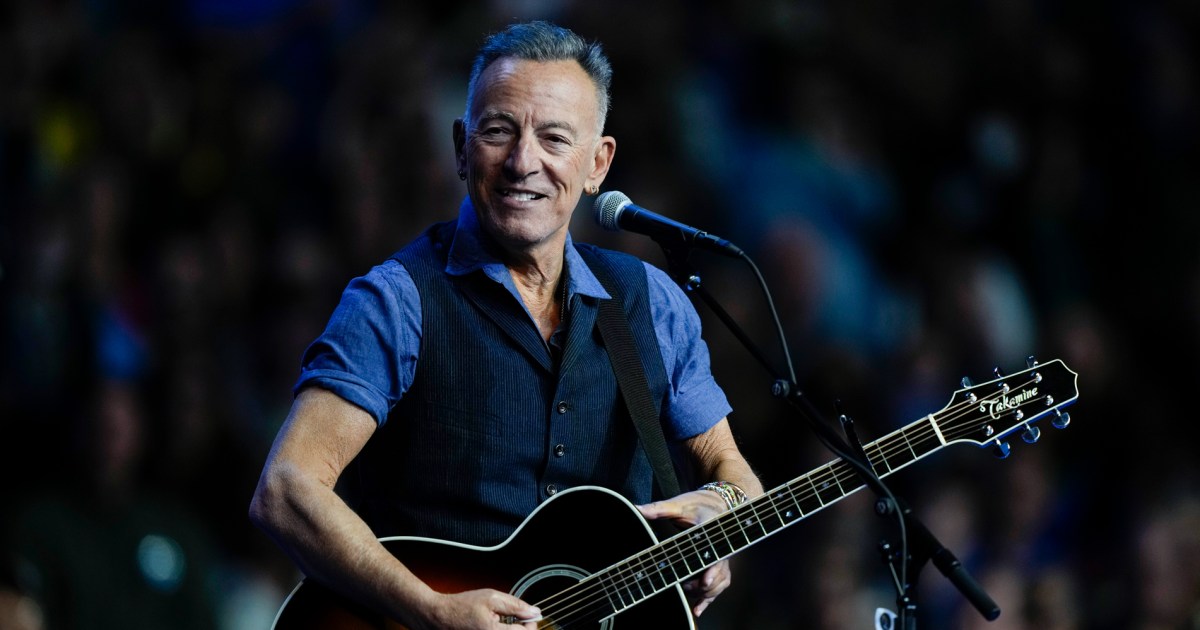Freehold, NJ —
There are stars. And then there are storytellers — people who don’t just make music, but shape the way we understand work, loss, hope, and the American spirit. Bruce Springsteen, now 75 years old, is one of those few.
From his earliest nights in smoke-filled Jersey Shore bars to playing sold-out stadiums across the globe, Springsteen didn’t just chase fame. He earned reverence — one chord, one confession, one defiant anthem at a time.
Born to Run, Raised to Last

Raised in Freehold, New Jersey, the son of a bus driver and a legal secretary, Springsteen’s roots were blue-collar — and he never left them behind. In a world where artists often reinvent to stay relevant, Bruce stayed grounded.
His early life was marked by tension, especially with his father, a theme that would echo later in songs like “Factory” and “Independence Day.” But the friction forged a voice that would resonate with millions feeling stuck between duty and dreams.
“I wasn’t just writing about me,” Springsteen once said.
“I was writing about all the people I grew up with — people who never had a microphone.”
A Sound That Spoke for the Working Man

His breakthrough came in 1975 with Born to Run, but it was albums like Darkness on the Edge of Town (1978) and Nebraska (1982) that revealed the depth of his storytelling. These weren’t just rock songs — they were portraits of economic despair, moral ambiguity, and quiet perseverance.
Springsteen’s voice — part preacher, part drifter — gave dignity to factory workers, Vietnam vets, and dreamers haunted by doubt.
Then came Born in the U.S.A. (1984) — a stadium-sized record whose misunderstood patriotism hid some of his most pointed social commentary. The title track became both anthem and critique, proof that Springsteen’s power came from singing truth no matter how uncomfortable.
The Boss Never Clocked Out
Unlike many of his contemporaries, Springsteen never leaned on nostalgia. His later works — from The Rising (after 9/11) to Western Stars and Letter to You — proved his ability to evolve while staying honest.
He’s tackled depression, aging, racial injustice, and American reckoning, all while still packing arenas with three-hour live shows that leave younger acts breathless. Even now, he performs like he’s got something to prove — only he doesn’t.
His bond with the E Street Band remains one of music’s most enduring — a brotherhood forged through decades of touring, triumph, and loss (notably, the passing of saxophonist Clarence Clemons and keyboardist Danny Federici).
75 Years Old — And Still on Fire
Today, at 75, Bruce Springsteen is more than a musician. He’s a symbol of endurance, compassion, and conviction.
He still walks with the soul of the kid who scribbled lyrics in notebooks under New Jersey streetlights. But now, he does it with a lifetime of wisdom, a weathered Telecaster, and a quiet defiance that says:
“I’ve seen it all. And I still believe.”
A Resurfaced Memory
And now, a moment from Springsteen’s past has quietly come to light — a handwritten lyric sheet found among archival recordings, dated months before Born to Run was completed.
Its content? Still unreleased.
Its tone? Described by those close to the archive as “raw, poetic, and deeply personal — almost like a goodbye written before the hello.”